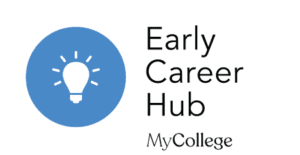Effective feedback in a secondary English classroom

This case study is written by Amy Forrester, a secondary school teacher and a Director of Pastoral Care.
As you read this case study, reflect on how the teacher uses various marking approaches to ease their workload. Take some time to think about what the teacher does, how they do it, what they might do differently and how this might influence your own practice.
Early in my career, I made a lot of mistakes with marking. I would spend hours laboriously filling students’ books with individualised comments. Everything would be triple marked. I would, without fail, be left deflated when I returned the books to students. Why hadn’t it made them do better? Still, at least I had worked hard for them – it would make a difference.
The sad truth was that I was suffering from the sunken cost fallacy, a mistaken belief that if I wrote enough, and spent enough time on it, students would do better as a result.
We know that marking does have a significant role to play in enhancing student progress (EEF 2019, Hattie 2009) but in order to do it well, we must first seek to understand what it is. Alison and Tharby (2015) suggest that the point of feedback is to identify a ‘learning gap’ in order to then respond in a way which seeks to close that gap. The EEF publication, A Marked Improvement (2016), acknowledges that ‘the time available for marking is not infinite’. This is especially so in a subject like English. They go on to say that it is essential that we make sure that ‘marking is as efficient and impactful as possible’.
There are a range of ways that this can be done in English.
Feedback Lessons
Pupils are unlikely to benefit from marking unless time is set aside to respond (EEF 2019). Whenever feedback is given to students, ensure that you set aside lesson time to do this so that it is not rushed. This is where the gaps in learning are closed. Dylan Wiliam (2011) states that feedback should be more work for the recipient than the donor. It is vital, therefore, that we put aside time for students to do this in class. Don’t set it as homework – they need you, their subject expert, there to help.
Whole Class Feedback
One of the most efficient approaches can be through whole class feedback. This involves taking in the work of the class and simply reading it through and using this to plan a feedback lesson. This can easily be done with making some simple notes as you read through the work. I use the headings ‘Areas of feedback, praise, common misconceptions, other’. In the areas of feedback, I note down common errors and allocate a number to each. I will then simply write the number onto students’ work, rather than the whole piece of feedback. For example, this might be:
1) Use tentative language when exploring the effect of writers’ word choices. Rewrite this section to be more tentative, using words such as ‘should’ or ‘might’.
I would highlight the part of the work to which this would apply and then write the number next to this part so that they’re clear where it applies.
When I give this back, I display the codes and targets on the board and students write the full comment. This is much more efficient than you spending a significant amount of time writing the same thing, numerous times, into different students’ books whilst also maximising the attention paid by students to the feedback that they’re being given.
Visualiser
A visualiser is a vital tool when providing feedback. There are a myriad of ways this can help you. You can start by showing some examples of student work and direct some explanations about why they are strong. You can do some live modelling that addresses common misconceptions arising from the work.
Verbal Feedback
You don’t need a stamp for this! Verbal feedback can be just as effective as written feedback. You can do this live in the classroom as you go, or you can see certain students over a period of lessons. Live marking provides the opportunity to spend some time on the trickier areas where students might need something bespoke explained to them.
Precise feedback
Whichever method you choose to use, what you say matters. The EEF rightly point out that targets need to be specific and actionable. This means that you need to consider any knowledge gaps impacting on this. For example, if the target is to use a wider range of punctuation for effect, do students know what they are and how to use them? How could you address it if they don’t know?
Knowing when to use which approach
Whilst there will be some marking, such as mocks, where you’re directed to mark in a certain way, you can select the most appropriate approach for your students’ learning in all other situations. Hattie and Timperley (2007) suggest that there are 3 different types of marking:
- Feedback on the task – the aim of feedback here should be to build subject knowledge essential for deeper learning. Feedback on this kind of task should focus on addressing misconceptions and ensuring students’ knowledge gap is addressed.
- Feedback on the process – the aim of feedback here is to focus on what the student has done to complete a piece of work. This might result in feedback on their language analysis, for example, and an appropriate target might be to use more tentative language.
- Feedback on self regulation – the aim of feedback here is the preparation a student has done. An appropriate target here might be for them to plan and for you to then model how to plan.
When you set a task, you should be thinking about what type of feedback is appropriate. Once you take the work in, read through it and think about whether the type of planned feedback is appropriate. Imagine you set an essay on Macbeth for your class and you plan to give feedback on their essay writing skills. However, when you take it in, you can see that there are lots of gaps in their knowledge of plot. It would be remiss to provide feedback on their essay writing in this case – you would need to step back a little, fill the gaps in knowledge and return to the essay in future. The key lies in having a responsive approach to your feedback, as well as thinking about the most efficient way to have the greatest impact.
References
Allison S and Tharby A (2015) Making Every Lesson Count. New York: Crown House Publishing Limited.
Elliott V et al. (2016) A Marked Improvement? A Review of the Evidence on Written Marking. Oxford: Education Endowment Foundation.
Hattie J (2009) Visible learning: A synthesis of over 800 meta-analyses relating to achievement. Oxford: Routledge.
Hattie J and Timperley H (2007) The power of feedback. Review of Educational Research. 77(1), 81–112. March.
Wiliam D (2011) Embedded formative assessment: Practical strategies and tools for K–12 teachers. Bloomington, IN: Solution Tree.










